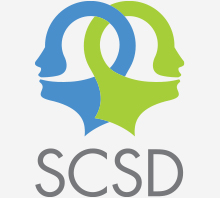An innovative pilot project designed to give kindergarten students crucial pre-reading skills also brought valuable hands-on experience to Masters students in their first year of speech and language pathology studies at McGill University. The Early Intervention for Literacy project, undertaken at Montreal's LaSalle Elementary (Junior), brought together classroom teachers, speech-language pathologists, and clinical students into a partnership with exciting potential for helping children learn the skills they need to be great readers.
 Led by Linda Schwartz, speech-language pathologists at the Lester B. Pearson school board created a program to help all LaSalle kindergarten students get a head-start on literacy by targeting the awareness of speech sounds. First year students from McGill screened the children for their knowledge of letters and the sounds that make up words.
Led by Linda Schwartz, speech-language pathologists at the Lester B. Pearson school board created a program to help all LaSalle kindergarten students get a head-start on literacy by targeting the awareness of speech sounds. First year students from McGill screened the children for their knowledge of letters and the sounds that make up words.
The classroom teachers provided a newly-designed program of instruction rich in exposure to these crucial pre-reading skills for all students. More intensive intervention was provided by the Masters students for children who needed extra support.
And the results? The enrichment led to overall improvement, with the students at Lasalle elementary scoring significantly higher than peers at two other regional schools in some phonological awareness skills. Plans to expand the screening and intervention to two more schools in different Montreal school districts are underway for next year.
The experience was positive all around. "The teachers were extremely enthusiastic", says Ms Schwartz. The McGill students who got first-hand experience were keen as well. Student Inbal Weisz noticed changes in the skills of some children; "it was really encouraging to see the improvement and to be actively involved in that." Most importantly, Weisz noted that "the kids definitely enjoyed it!"
Learn about helping your child learn to read:
There are many ways that parents can help their preschool-aged child get ready for the task of learning to read. Your child will be well prepared if he or she knows the names and sounds of all the letters of the alphabet, has a large vocabulary, and enjoys playing with the sounds of words. Here are some ideas:
Letter Knowledge
When teaching your child the names and sounds of the letters it is not necessary to begin with "A" and work towards "Z". Try starting with the letter that is most interesting to your child, the first letter in his or her name. Move on to the first letter in the name of other family members, including your pets! Take every opportunity to help your child form and recognize this letter. When baking, prick it onto the tops of your pies and mold cookie dough into the shape of the letter. If your child doesn't enjoy crayons or paints try tracing the letter into mud with your fingers or stamping it into the sand with your feet. When your child is familiar with the shape and name of the letter, help your child to understand that the letter goes with a special sound. For example, if your child's name is Peter and you are reading "The Three Little Pigs", you could have a conversation like this with your child:
Look, this book is called "The Three Little Pigs" (pointing to each word of the title as you read). Can you find the word that starts with "P". Yes, that word says "pigs". It starts with the sound "p", just like your name "Peter".
Vocabulary Size
Children who know a lot of words usually find it easier to learn to read. One of the best ways to expand your child's vocabulary is to read books to him or her, asking questions and making comments as you read. If you ask too many questions your child may become frustrated but you should be able to ask a question every one or two pages. Children love to hear you read the same book over and over again so you can ask different questions each time you read a book. Here are some examples for "The Three Little Pigs."
Where do you think the straw came from? (From a farm)
Why did he make his house quickly from straw? (Because he's lazy)
What is he using to carry the bricks? (A wheelbarrow)
This pig is not lazy, he's a hard worker, he's very industrious.
The pigs feel scared right now. In fact, they're terrified!
What do you think will happen next?
Sound Play
Start singing songs and reciting nursery rhymes to your baby right from the beginning. Nursery rhymes and tips for reading them with your child can be found on the internet at sites such as The Mother Goose Pages at: http://www-personal.umich.edu/~pfa/dreamhouse/nursery/rhymes.html
Take all opportunities to point out words that rhyme and encourage your child to think up other words that rhyme. For example, when reading "The Three Little Pigs":
The big bad wolf huffs and puffs. Did you know that the words "huff" and "puff" rhyme with each other? They sound kind of the same. Can you think of other words that sound like "huff" and "puff"? (rough, tough, stuff, cuff, etc.) Notice that "big" and "bad" both start with the "b" sound. Can you think of other words that start with "b"?

